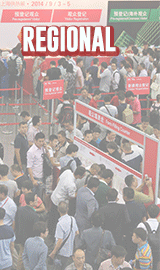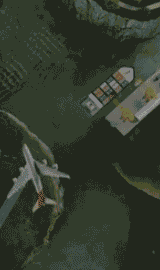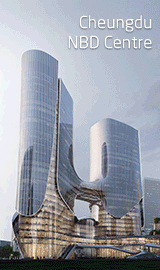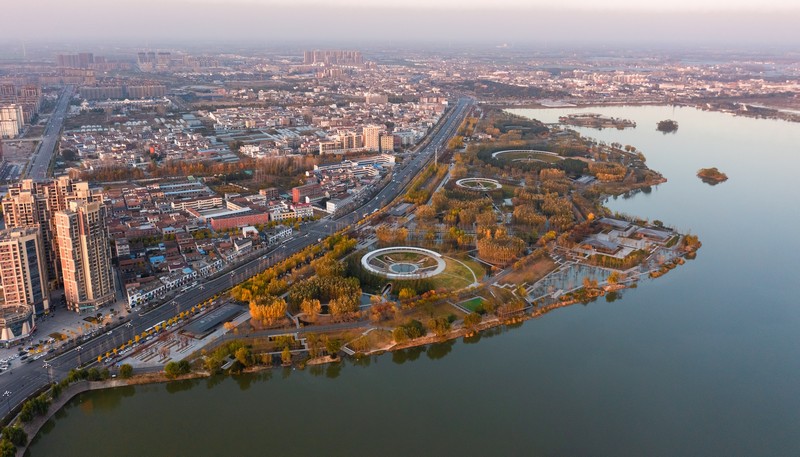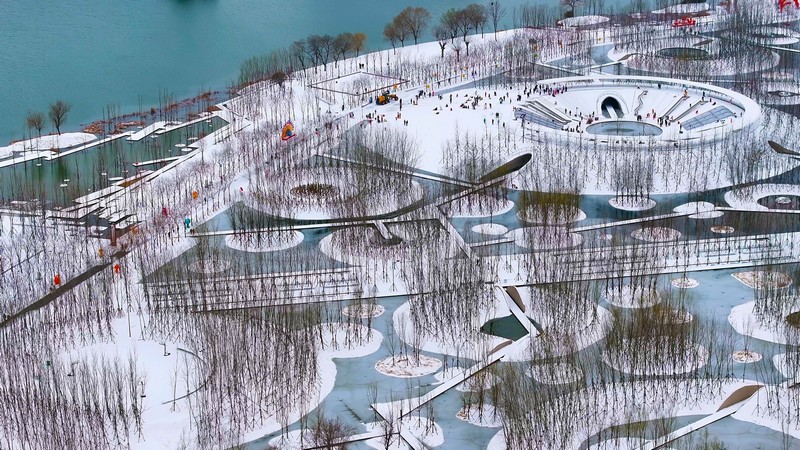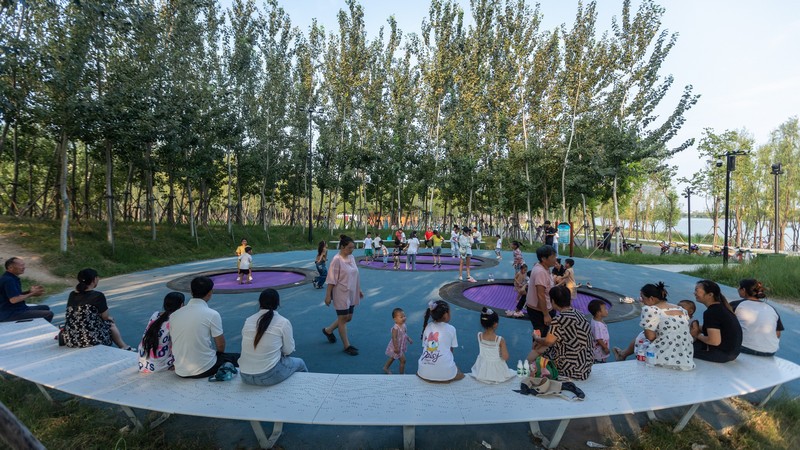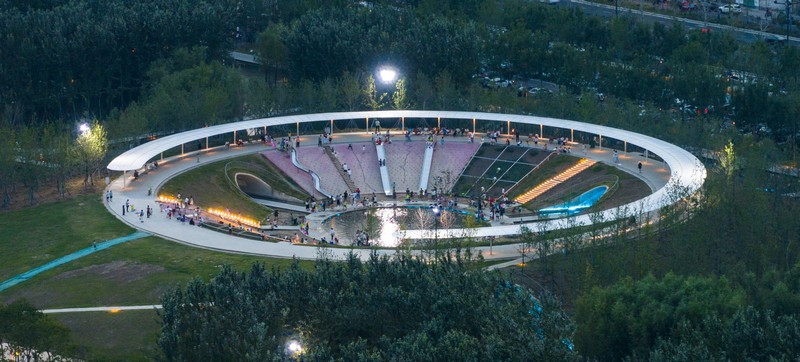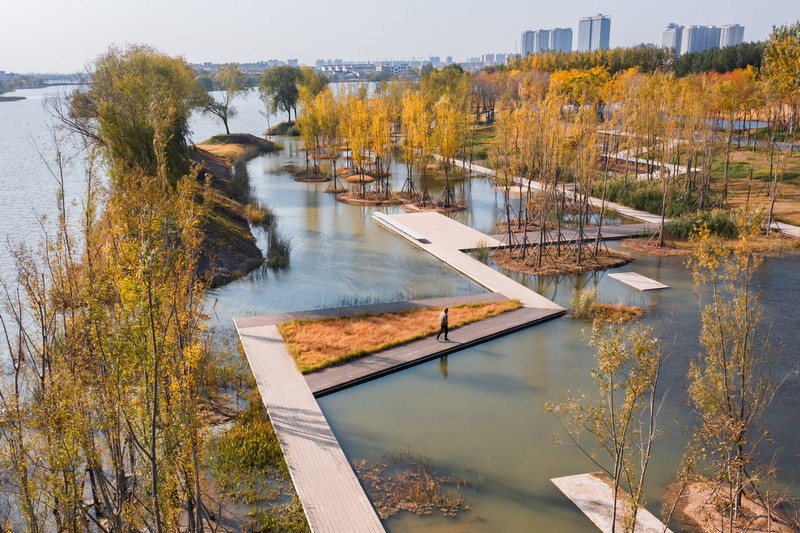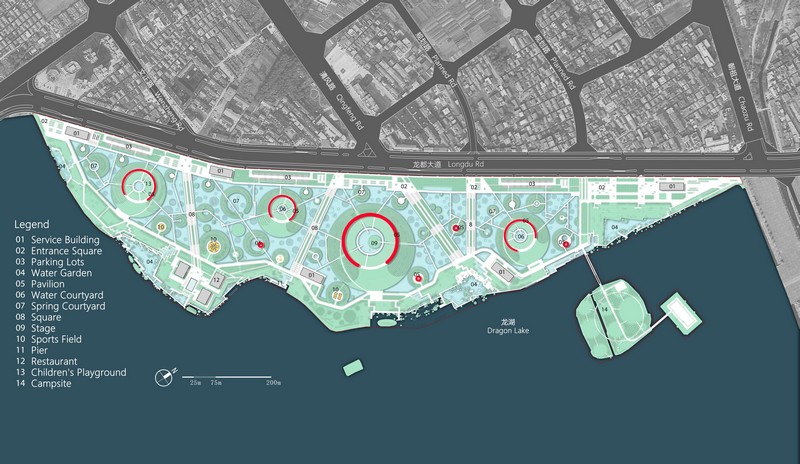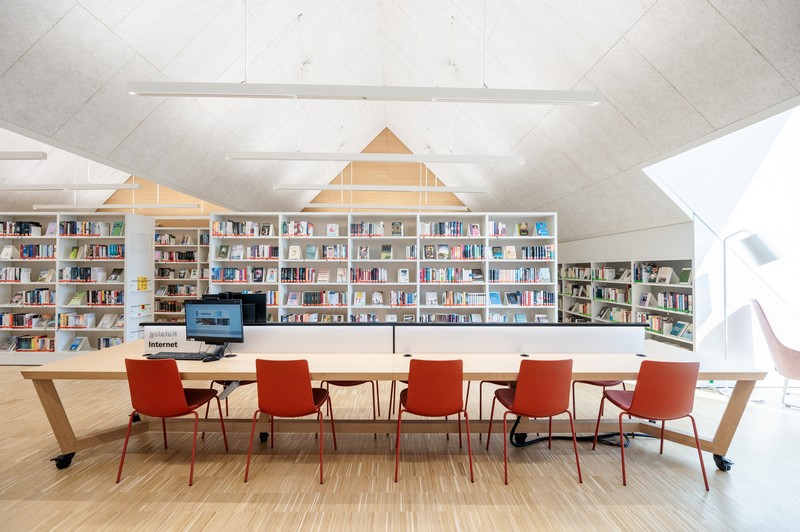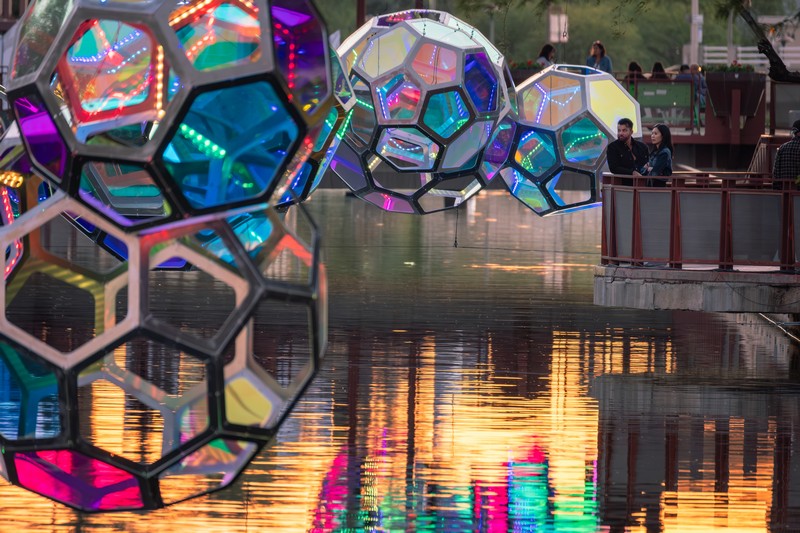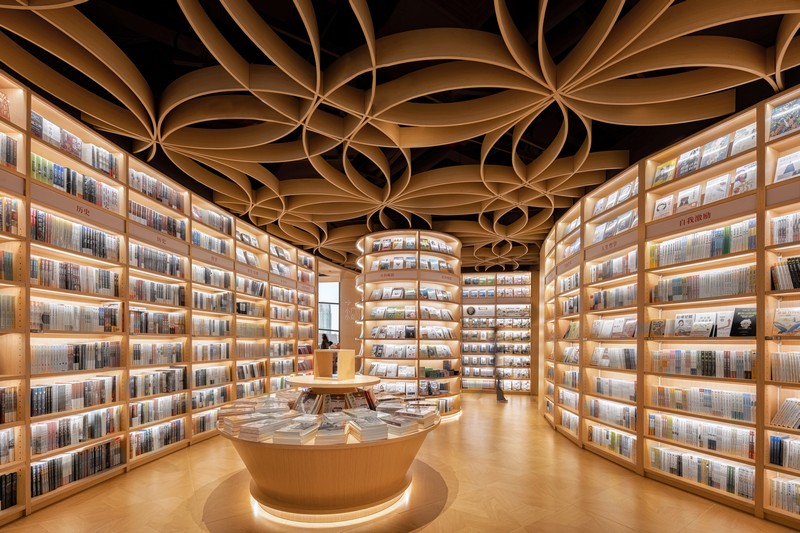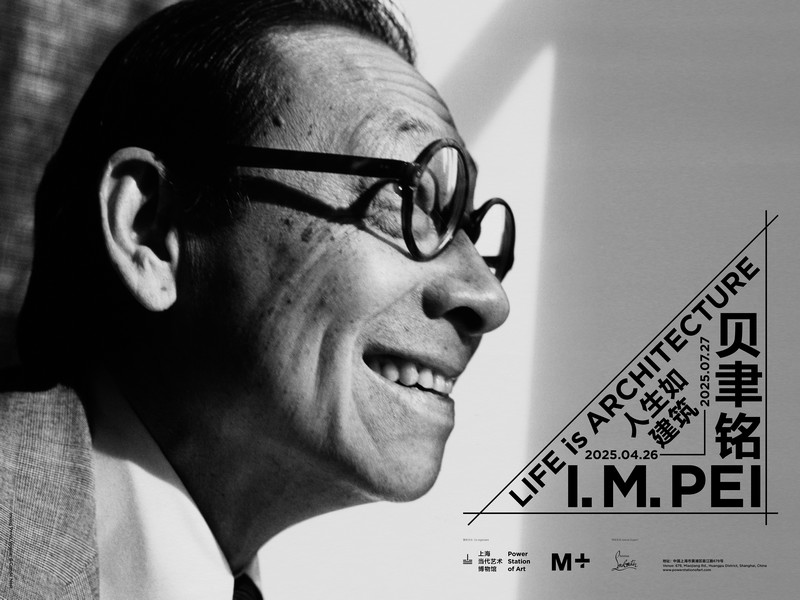In a flood-prone city rooted in mythology, Turenscape defies expectations with a crater-island dreamscape engineered to absorb, cleanse, and reconnect. This is landscape architecture as infrastructure, heritage, and survival. Welcome to Huaiyang’s watery revolution.
Mythology Meets Modern Resilience
The Huaiyang Fuxi Cultural Park is located in Huaiyang District, Zhoukou, eastern Henan Province, China. Bordering Anhui, Zhoukou lies near Zhumadian, Kaifeng, and Shangqiu, and is celebrated as the legendary birthplace of Fuxi. It’s home to the Taihao Mausoleum, a key heritage site. The park sits beside Dragon Lake, a flood-prone zone now transformed into a resilient wetland.
Covering 43 hectares, Huaiyang Fuxi Cultural Park showcases flood-resilient urban design inspired by sponge city principles and ancient Chinese cosmology. Turenscape reused 860,000 cubic meters of site material to sculpt crater-islands modelled after Bagua and constellation maps. These islands serve as multifunctional public spaces—amphitheatres, gardens, sports courts, and winter recreation zones.
A solar-powered bio-treatment system filters 11,500 tons of water daily through constructed wetlands. Poplars and willows, echoing ancient folk songs, culturally and ecologically anchor the landscape. Designed by Dr. Kongjian Yu, Turenscape’s philosophy blends environmental survival with heritage and human scale.
Huaiyang, shaped by centuries of Yellow River floods and challenged by modern urban sprawl, needed radical renewal. Dragon Lake, the region’s flood buffer, had been compromised by development. The solution: a sponge city park that embraces water instead of resisting it.
At its heart are crater-shaped islands formed from recycled on-site debris, creating a poetic network of public spaces that reflect Bagua cosmology and ancient star maps. These islands are rich in function—amphitheatres, playgrounds, gardens, sport courts, fountains, and art installations. In winter, the terrain transforms into a venue for skiing and skating.
Filtering the Future: Wetlands at Work
Ambitious in scale yet logical in execution, the park’s bio-treatment wetlands purify over 11,500 tons of water daily from the lake and city. A regulated boardwalk system threads through the landscape like a neural network, connecting areas seamlessly. The lack of rails—combined with safe water depths—encourages intimate interaction with nature through trust in design.
But this isn’t superficial sustainability. Turenscape’s ethos, “Nature, Man, and Spirits as One”—is rooted in decades of practice and political advocacy. Spearheaded by Harvard-educated Dr. Kongjian Yu, the firm has executed over 1,000 projects in 250 cities, championing sponge urbanism and “negative planning” long before climate urgency became mainstream. Yu’s accolades include the Oberlander Prize, the IFLA Sir Geoffrey Jellicoe Award, and membership in the American Academy of Arts and Sciences. He has redefined landscape architecture as an “art of survival.”
Huaiyang Park embodies survival, of culture, ecology, and a city’s rhythm in the face of environmental collapse. With native poplars and willows evoking folk songs of millennia past, the park harmonizes function and folklore. it sets a new standard for urban space, where ecology leads and the landscape becomes a living system of resilience and renewal.
About the Designer
Established in 1998, Turenscape is acknowledged as a pioneering, government-accredited first-level design institute. With a dynamic team of over 500 experts, they specialize in architecture, landscape architecture, and urbanism, and are committed to delivering exceptional and holistic design solutions.


